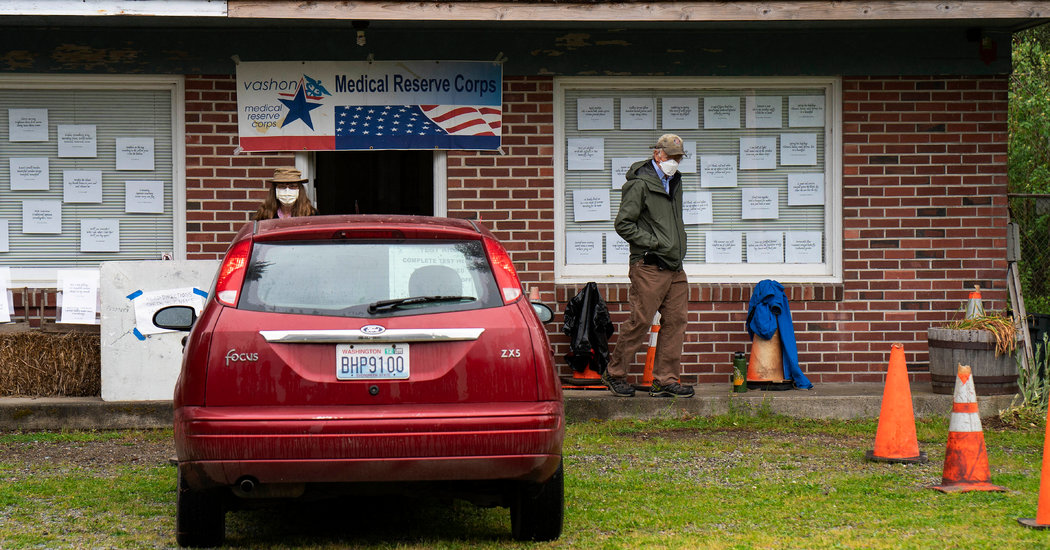In mid-March, Dr. Jim Bristow’s wife came down with gastrointestinal issues. Then, she couldn’t stop coughing.
Her symptoms pointed to coronavirus, but she couldn’t get tested — in part because of the nationwide test shortage, but also because the pair lived in Vashon, an idyllic town on an island in Washington State’s Puget Sound with scant medical resources. When Dr. Anthony S. Fauci of President Trump’s coronavirus task force said that the United States was failing with regards to testing, Dr. Bristow, said that it “really struck me.”
Dr. Bristow felt inspired to collaborate with other members in the Vashon community to develop a model to test, trace and isolate — in essence, a coronavirus response plan that they call the Rural Test & Trace Toolkit. Dr. Bristow, a retired cardiologist who was trained at the start of the AIDS epidemic, now believes that their model can be replicated, or serve as a guideline, for other isolated parts of the United States, including rural and tribal communities as they continue to face outbreaks.
As the novel coronavirus expands beyond major cities and the coasts — and as states start to emerge from shelter-in-place orders — locations with fewer medical resources will need strategies that work for them.
“While rural areas are typically underresourced and disadvantaged as it comes to health and health care, a model like this shows that rural places can be particularly nimble and flexible,” said Carrie Henning-Smith, the deputy director of the University of Minnesota’s Rural Health Research Center.
Image
Image
Although Vashon Island is geographically part of King County — which includes Seattle, the early epicenter of the coronavirus outbreak in the United States — it is unincorporated, meaning it is governed by the county but mostly manages its own affairs.
“We’re an hour and a half from the nearest emergency room, we don’t have acute care facilities on the island, and our ambulance system can be easily overwhelmed,” said Dr. John Osborn, who works as an emergency room physician in Seattle and also leads Vashon’s Medical Reserve Corps. “The challenges we face are faced by many other rural communities.”
After Dr. Bristow’s initial frustrations, he eventually got in touch with Dr. Osborn and the reserve corps. They came up with a plan for a coronavirus response team on the island. Another 70 volunteers joined the island’s corps to help — many of them older and at higher risk of dying or contracting severe disease if they are exposed. “We have a volunteer work force we simply can’t expose,” said Dr. Bristow, also the former deputy director of the Joint Genome Institute at Lawrence Berkeley National Laboratory in California.
Dr. Zach Miller, a resident of Vashon who set up the infectious disease department at the nonprofit regional health care system Group Health (now part of Kaiser), quickly realized that nasal swabs could be used in lieu of the clinically standard nasopharyngeal swabs, skirting the need for more extensive personal protective equipment such as face shields and N95 masks. “This can allow the model to be replicated in other places with a group of well-trained volunteers,” he said.
Since April 7, a historic building in the center of Vashon has been transformed into a coronavirus testing site. For a few hours every day, volunteers set up tents and tables outside and don medical masks and gloves to help residents get tested for coronavirus infection. Residents drive up and use their vehicles as personal waiting rooms. But instead of a trained medical practitioner inserting a swab deep into their nose, each patient gets a kit from a volunteer, stops their car and takes the swab themselves.
Image

So far, this testi


